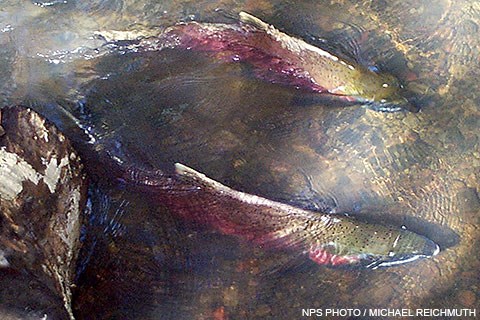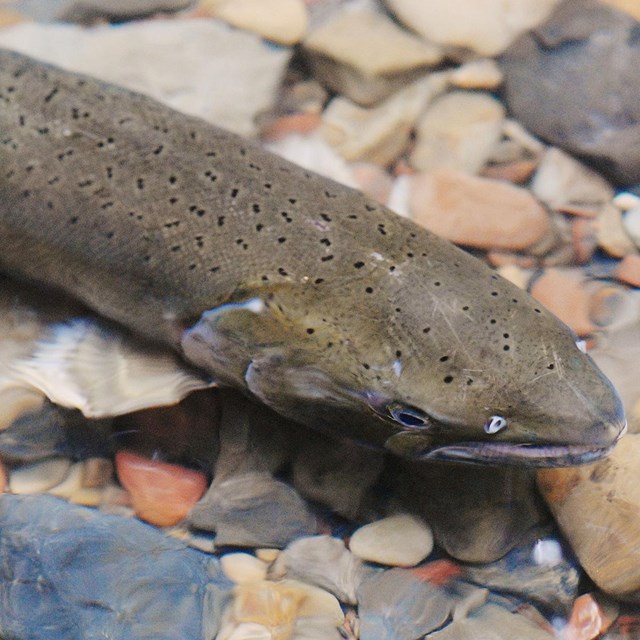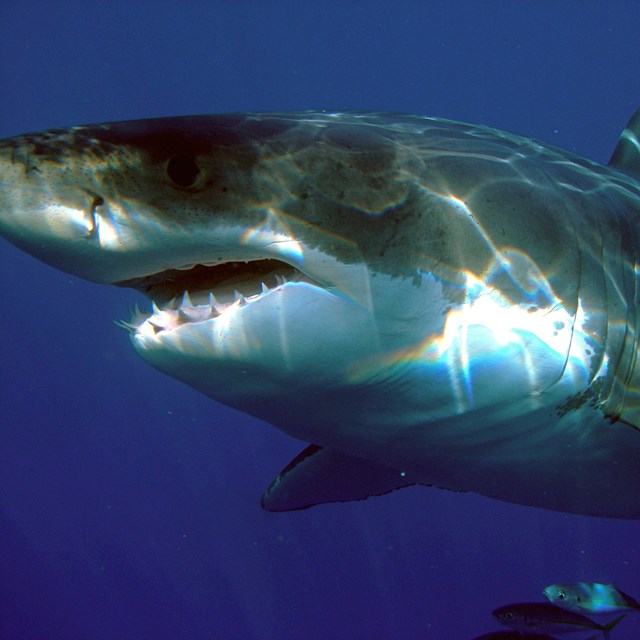
Fish play an important role in water environments. They feed on nearly all types of plants and animals, they provide a home for other organisms such as bacteria and crustaceans, and they are eaten by many other types of animals, including many terrestrial species. Their vast numbers and diversity also contributes to their importance. Fish are the most abundant vertebrates in terms of both species and individuals. It is estimated that there are approximately 22,000 species of fish which make up about half of all species of vertebrates on earth—a little more than half of these species are marine (58%). Over 130 species of fish have been recorded at Point Reyes. Some are protected by the Endangered Species Act, such as the tidewater goby, coho salmon, and steelhead trout. The large numbers of pinnipeds (i.e., seals and sea lions) that haul out at Point Reyes and on the Farallon Islands attract white sharks to these waters. View Fish of Point Reyes National Seashore species list (70 KB PDF, Adobe® Acrobat Reader® may be needed to view PDFs).
Science & Research Project SummariesFrom 2006 to 2018, Point Reyes National Seashore and Pacific Coast Science and Learning Center (PCSLC) staff and communication interns assisted scientists conducting research through the PCSLC and the San Francisco Bay Area Inventory & Monitoring Network to produce a series of Resource Project Summaries, four of which were about fish at Point Reyes. These one- to two-page summaries provide information about the questions that the researchers hoped to answer, details about the project and methods, and the results of the research projects in a way that is easy to understand.
|
Last updated: January 11, 2025


